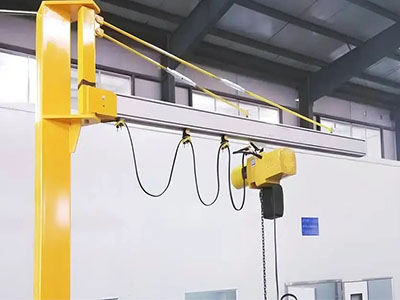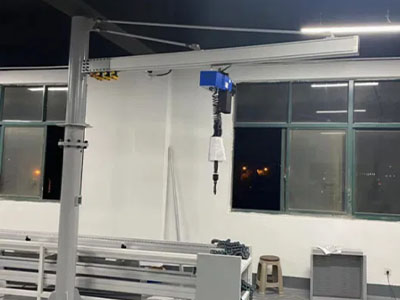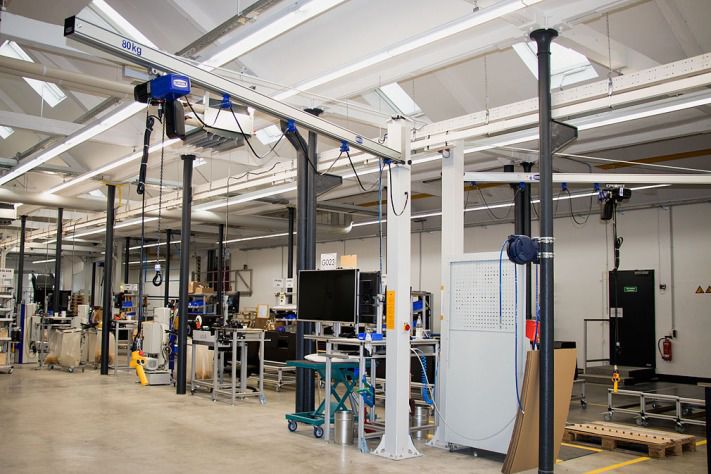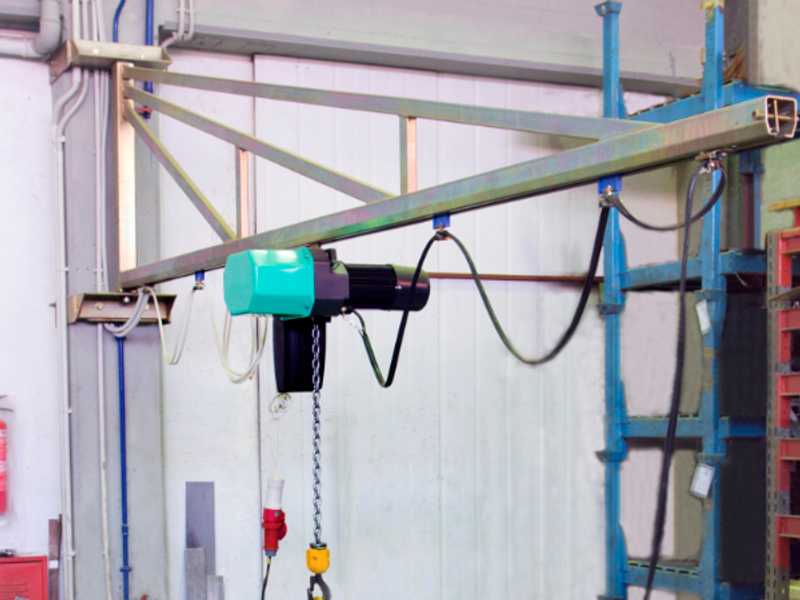Lightweight Aluminum I-Beam Jib Cranes
The lightweight aluminum l-beam jib crane is a pinnacle of engineering, designed to offer a blend of strength and portability in material handling. lts structure is anchored by an aluminum l-beam, which is the backbone of the crane. This l-beam is chosen for its exceptional strength-to-weight ratio, allowing the jib crane to support substantial loads while remaining easy to install and relocate.

The crane's structure is composed of several key components. The base, often mounted on a solid foundation, provides stability. The column structure acts as the vertical support, while the helix-loop-helix, or the jib arm, extends horizontally to cover the working area. The rotating mechanism enables the jib arm to rotate a full 360 degrees, offering a broad operational radius. The hoisting mechanism, typically an electric hoist, allows for the vertical movement of loads, ensuring smooth and controlled lifting.
One of the defining features of these cranes is their lightweight nature, which stems from the use of aluminum. This material choice not only facilitates ease of movement but also resists corrosion, an essential attribute for cranes operating in various environmental conditions. The cranes are also known for their high load capacity and precise control, making them ideal for precision assembly tasks in manufacturing and assembly lines.

In terms of applications, Lightweight Aluminum l-Beam Jib Cranes are versatile. They are commonly found in workshops, warehouses, and construction sites where space is at a premium and the need for a crane that can be quickly repositioned is high. Their ability to handle a variety of loads with precision makes them suitable for tasks ranging from lifting heavy machinery to delicate assembly work.
In conclusion, lightweight aluminum l-Beam jib cranes are a compelling choice for industries seeking a crane that is both robust and easy to maneuver. Their structural integrity, combined with their lightweight design and versatility, make them an asset in any environment where material handling is a priority.





